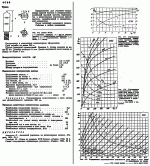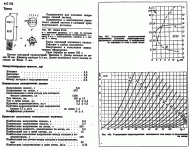Hi,
Just a newb question (yet again).
I have recently got into building amplifiers with valves, and built a simple 3 stage amplifier using medium mu triode for input and intermediate driver stages.
I have got to a stage where I dont believe I can improve the circuit much, without a change in topology. This is ok, as I am pretty happy with the results, but....
After spending some much needed time reading more into the compound valve stages in Merlin's excellent preamp book, and shopping for some lower mu tubes, i have ended up with several different ideas on front end design for the amplifier:
Mu follower using identical triodes
Half mu follower using identical triodes
Mu follower with dissimilar triodes
half mu with dissimilar triodes (this one I need to read in more depth to understand)
I have been successfully using 6S6B-V, which has medium mu, and now I also have a few 6S3B-V triodes, which to my inexperienced brain, appear to be suitable for a line stage, perhaps driver duty also.
Bear with me while i dig up the specs....
Just a newb question (yet again).
I have recently got into building amplifiers with valves, and built a simple 3 stage amplifier using medium mu triode for input and intermediate driver stages.
I have got to a stage where I dont believe I can improve the circuit much, without a change in topology. This is ok, as I am pretty happy with the results, but....
After spending some much needed time reading more into the compound valve stages in Merlin's excellent preamp book, and shopping for some lower mu tubes, i have ended up with several different ideas on front end design for the amplifier:
Mu follower using identical triodes
Half mu follower using identical triodes
Mu follower with dissimilar triodes
half mu with dissimilar triodes (this one I need to read in more depth to understand)
I have been successfully using 6S6B-V, which has medium mu, and now I also have a few 6S3B-V triodes, which to my inexperienced brain, appear to be suitable for a line stage, perhaps driver duty also.
Bear with me while i dig up the specs....
Some data:
6S6B-V:
Mu about 25
Ra about 5k (from recall)
2.5 to 4.5 mA/V
Characteristic circuit/charts (which imprinted but cannot find online now in look again, state a Vg of about 2V, close enough to my input stage circuits in reality)
6S3B-V
Mu about 14
Similar or slightly higher Ra than 6S6B
1.75-2.75 mA/V
Characteristic circuit/charts, show Vg of about 8V.
Seeing this, and noting my driver stage is biased at about Vg -5V using 6S6B, I supposed that a 6S3B may suit better, possibly swing more mA to the output stage.
Cathode current rating are similar between both valves.
So I then suppose that a mu follower using the 6S6B as the lower valve, and 6S3B as the upper valve, may perform well, perhaps better than a mu follower using identical valves.
Can anyone help enlighten me a little?
I believe that the lower mA/V of the 6S3B is suited to a larger input signal swing, cathode follower or perhaps mu/half mu follower.
But is my assertion close to correct? Or am I barking up the wrong tree entirely?
6S6B-V:
Mu about 25
Ra about 5k (from recall)
2.5 to 4.5 mA/V
Characteristic circuit/charts (which imprinted but cannot find online now in look again, state a Vg of about 2V, close enough to my input stage circuits in reality)
6S3B-V
Mu about 14
Similar or slightly higher Ra than 6S6B
1.75-2.75 mA/V
Characteristic circuit/charts, show Vg of about 8V.
Seeing this, and noting my driver stage is biased at about Vg -5V using 6S6B, I supposed that a 6S3B may suit better, possibly swing more mA to the output stage.
Cathode current rating are similar between both valves.
So I then suppose that a mu follower using the 6S6B as the lower valve, and 6S3B as the upper valve, may perform well, perhaps better than a mu follower using identical valves.
Can anyone help enlighten me a little?
I believe that the lower mA/V of the 6S3B is suited to a larger input signal swing, cathode follower or perhaps mu/half mu follower.
But is my assertion close to correct? Or am I barking up the wrong tree entirely?
Attachments
Last edited:

